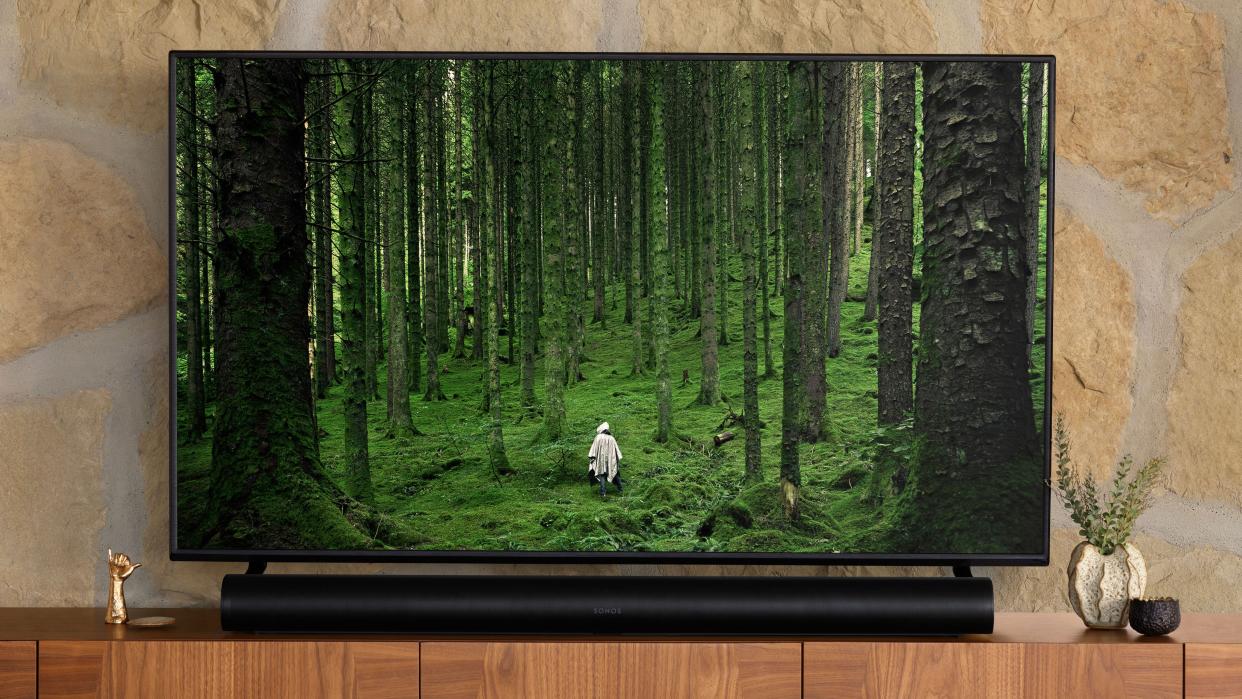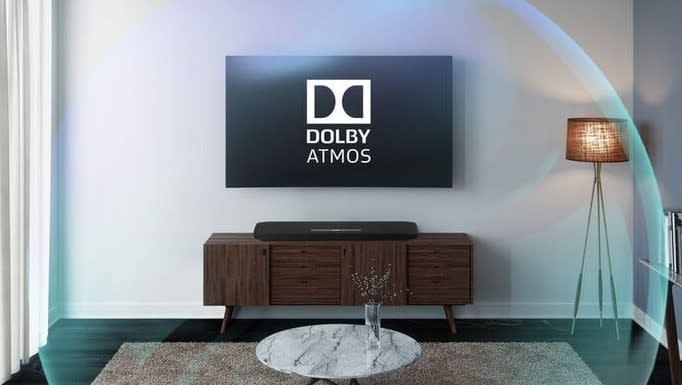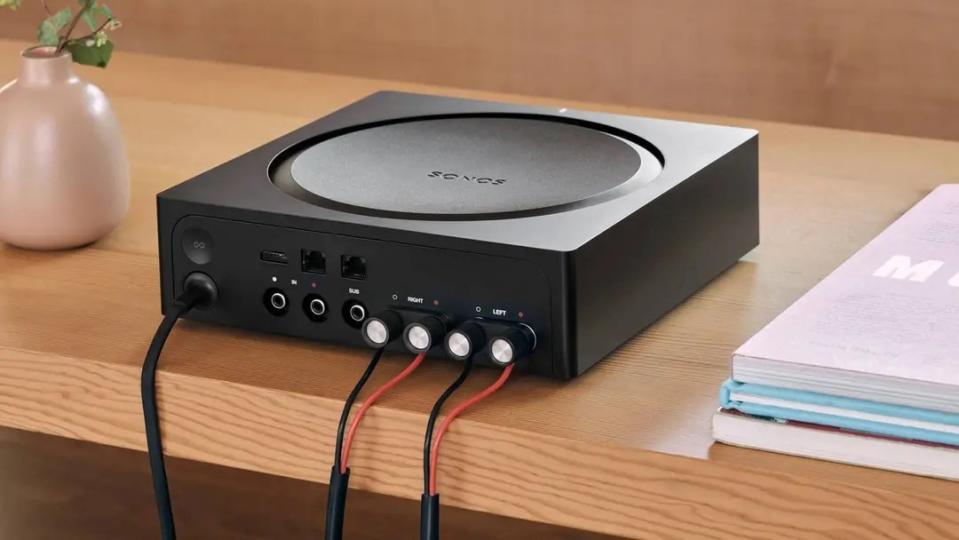Soundbars are great but I found this device delivers even better TV audio

I’ve always enjoyed great sound quality when it comes to listening to music, whether it’s from one of our best record players, audiophile headphones or streamed wirelessly via one of the best Bluetooth speakers, say. My passion for all things audio also translates to watching movies and I naturally embraced the surround-sound movement with at least five speakers and a subwoofer dotted around the room when home theater first took off more than 20 years ago.
In fact, I was so into multi-channel sound and the immersive experience at the time, that I dedicated a room of my house to surround sound and movies, and kitted it out with a flat screen TV and a house-rattling subwoofer. At the time, this kind of home theater setup with first generation plasma flat screen — the TV tech before LCD, OLED and QLED — seemed like pure science fiction, and for myself and several friends at the time, staying in became the new going out.
Several house moves later and a shift in priorities have meant that my audio setup has become streamlined, and has shrunk to fit in with the household aesthetic as well as meet with fellow householders' approval. Plus, I no longer have the space for multi-speaker arrangements eating up valuable living space, and surround speakers just look clumsy and entirely out of place in my olde-worlde property.
Despite the shrinking size of my TV sound system, the screen itself is now almost twice the size to when I started out. When I bought my most recent TV, I was hopeful that its sonic performance would at least get close to the striking and attention-grabbing images the screen produced, and deliver a punchy sound to match the screen's dynamic pictures.
Sadly, that wasn't the case and, for me at least, there's a huge disconnect between the big bold images of the TV screen and the thin and weedy sound that comes from its speakers. I've tried manipulating the EQ controls to optimize it for best sound output of course, but whatever I do, there's no improving on the anemic and soulless sound delivery.
I'm sure many will be able to appreciate that as TVs have gotten thinner, the built-in speakers have had to shrink to fit inside the tiniest of spaces. In such a confined space, this restricts the size and amount of travel a speaker driver has available to push out the air to generate soundwaves with sufficient energy across the full range of frequencies.
I'm not underestimating the efforts of the TV's audio designers as there's often plenty of sophisticated digital signal processing (DSP) tech onboard to help get the best TV sound output possible, but even the best TV screens aren’t exempt from sounding thin and weedy.

Soundbars are pretty good at overcoming the poor sound quality performance that often results from even the best TV screens, but for me, they're not always the answer if sound quality with high-octane movie and music soundtracks is ultimately your goal.
Don't get me wrong: The majority of the best soundbars are a massive improvement on the sound delivery from a TV's built in speakers, and several models such as ones we've reviewed from Sonos, Bose and Bowers & Wilkins, also have Dolby Atmos to help bring an extra sound dimension to the movie experience. But in pure sound quality terms, I've found a compact hi-fi solution that sounds superior to any soundbar I've heard so far.

Great TV sound without a soundbar
I've listened to several soundbars at home recently across a broad range of different prices. On the face of it, each is a remarkably elegant solution to upgrade TV sound compared to the slightly cumbersome arrangement of the alternative solution I'm about to suggest, which includes three separate components to take care of specific audio tasks: a pair of passive bookshelf speakers, a powered subwoofer, and the Sonos Amp. It ranks as one of the best TV sound upgrades I've tested.
The Sonos Amp is something of a master stroke at $699 / £699, to which you simply add a set of passive speakers. Not only does it integrate with other Sonos products on your home network for multi-room streaming, but the Sonos S2 control app enables geeky audio fanatics like me to adjust the audio so that it's perfectly in sync with the picture on the screen — a neat and terrifically useful facility.
Although not as powerful as some separate amplifiers I've heard or as well-featured as the best AV receivers, the Sonos Amp is compact and comes with a useful HDMI eARC/ARC port to handle audio from your TV, plus an array of other useful data ports and wireless connectivity options.

Sonos Amp: $699 @ Crutchfield
The Sonos Amp connects to external passive speakers. It connects to a TV via HDMI port and has a single stereo wired input for hooking up an external line-level source such as a CD player or turntable. It neatly brings existing audio kit into the Sonos world, and once connected will act as any other Sonos speaker for group play and multiroom audio over Wi-Fi.
Price check: $699 @ SonosView Deal
Music sounds better with you
I haven't specified a particular pair of passive speakers to partner the Sonos Amp, as pretty much any bookshelf or floorstanding speakers from a reputable audio brand will be suitable — think along the lines of Hi-Fi names such as Q Acoustics, Klipsch, or Bowers & Wilkins though. In my experience, if a speaker can handle vocals and delivers music well, it should sound pretty great with TV sound too.
Although the Sonos Amp can be connected wirelessly to a Sonos Mini Sub ($429) or Sonos Sub ($799), which model you go for will depend on your choice of main speakers. If your speakers are up to the job in terms of their bass output with music, you're unlikely to need a subwoofer. Unless, if like me, you like your movie soundtracks and TV dramas to come with plenty of high-octane energy and gravitas.
Alternative non-Sonos sub options can be connected via a dedicated wired Sub output connection at the back of the Amp. I've tried out both SVS and REL sub options over the years, and both companies offer plenty of great models at a range of price points.
It's not a one-stop solution, and the combined price can easily match some of the best Dolby Atmos soundbars I've tested. But from living with this setup for several years now, this Sonos Amp and speaker setup outperforms any soundbar in terms of dialog intelligibility with TV dramas and movies. Even without a subwoofer connected, a medium-sized bookshelf speaker should produce enough bass to deliver explosive effects that blow you away on the sofa, and music in any movie soundtrack simply sounds better and far more engaging in this arrangement.
You won't get Dolby Atmos support to tickle your ears with extra sound dimensions, of course, but with audio quality this good, you really won't miss these extra tricks as you'll be too engrossed in what's happening on the screen and the high-quality stereo sound treating your ears.

